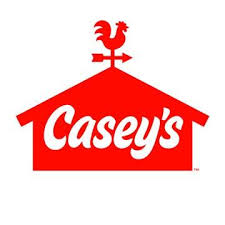Branding Bunch
Experts detail common business bumbles in messaging

PERRY BEEMAN & ANNE CAROTHERS Jul 1, 2016 | 11:00 am
<1 min read time
0 wordsAll Latest News, Business Record Insider, Sales and MarketingA truth veteran journalists grasp pretty quickly at the Business Record: our sources know way more than we do.
So, as much as possible, we try to get out of the way and let local business and industry leaders share their wisdom. That was our approach when we began brainstorming ideas for our annual sales and marketing issue. We wanted to let local leaders in this field share their wisdom, so we created a survey and asked marketing and public relations professionals to respond.
In typical fashion, Des Moines business leaders stepped up to the plate and generously offered their insight, experience and wisdom on the most common marketing or public relations mistakes they see and how companies can avoid making them.
Questions:
What is a top mistake that you see businesses make in their marketing, branding or public relations work, and how does it negatively affect the business?
Given the top mistake you identified, what is the best strategy for a business to either remedy or avoid the mistake, and what should a business be doing?
Our Experts:
Diana Deibler
Ryan Hanser
Catherine Huggins
Drew McLellan
Todd Senne
Mike Schreurs
Eileen Wixted
Denise Essman
Ryan Hanser, President, Hanser & Associates
Mistake
1. We see businesses making decisions without doing research, leading to disappointing or even negative results.
2. We see businesses that still think they can hide bad news, only to have it leak out and make them look worse for trying to keep it under wraps.
3. We see businesses treating public relations as a thing to do when something’s gone wrong, which means they don’t have the trust and goodwill banked when they need to draw on it.
Solution
1. Before you make a PR or marketing decision, find out what the data says. It’s easier than ever to do the homework in 2016. Behavioral data is available online at scale, and you can get customer feedback almost instantly.
2. When something’s wrong, the best move is almost always to tell the whole truth fast. By owning the issue, the business can frame it properly and demonstrate its action to resolve it. In that regard, crisis is opportunity; when you have the public’s attention and you exceed expectations, you’re winning trust and building reputation in the face of bad news.
3. As a management function, PR’s tremendous value is in guiding decisions that keep a business out of trouble. Taken further, research shows that a continual investment in public relations makes a substantial improvement in business performance across all types and sizes of organizations.
Denise Essman, President and CEO, Essman/Associates and Essman/Research
Mistake
Businesses often don’t understand or have an appreciation for what their customers really need or want in their products or services. So they often miss the mark of what the customer finds of value. Also, they often promote the features of their products, services, etc., rather than the benefits. Surprisingly, many companies don’t have good databases of their customers — contact information, profiles, etc. A good database can be mined for useful information to help with marketing efforts. Many businesses don’t know how their customers prefer to be communicated with, what their media habits are. So often businesses use vehicles they prefer, not what their customers pay attention to. Know what the competition is doing — all the time.
Solution
Keep good, up-to-date records, files of their customers. Determine the data that will be useful and keep it in a good database that is continually updated. Conduct marketing research to determine what customers really need and want, what they find useful, of value, how they want to be communicated with, etc. Promote benefits and value. Conduct competitive surveillance on an ongoing basis.
Diana Deibler, President, Deibler & Co.
Mistake
A common mistake is treating marketing campaigns, sponsorships and/or news releases as projects to be completed rather than strategic initiatives to be leveraged. This mentality often means businesses are investing significant resources without reaping their full ROMI (return on marketing investment). Unsure if your company is making this mistake? Here’s a simple test: Review your marketing and PR plans. If there is a column to indicate “Done,” or a project report that reads like a checklist of tasks, chances are your team is focused on completion rather than ways to further leverage.
Solution
Start by recognizing a campaign launch, event sponsorship or media coverage is the starting point for that investment, not the end. Go into each situation planning to put legs under it for other purposes. This mindset ensures you are intentional in planning for what will be needed to keep it running through other channels.
Related Tips: Do add a column heading — “Ways to Leverage” — to every plan. Don’t think sharing positive news is too self-serving. It’s all about positioning. For example, if sending a good-news item to a client, include: “Your vote of confidence is an important part of what made this recognition possible. Thank you for your business!”
Eileen Wixted, President, Wixted & Co.
Mistake
Not recognizing communication as a core business function and waiting too long to bring them in on issues, initiatives and other topics that require thoughtful and deliberate communication strategies. Communications is often seen as a nice-to-have, rather than a core business function. When communication is overlooked, companies risk losing buy-in from employees, business partners and others around initiatives, risk and issues management, or brand and marketing initiatives. You cannot achieve and sustain success without making a commitment to communications — it needs to be a significant part of your organization’s business culture.
Solution
Consult with communications early and often. They can help think through the brand and reputation implications of major issues and initiatives. Ensure communications is also looped in on major initiatives, legal or regulatory issues, or any other topics that may raise questions among internal or external audiences. For every operational change there should be a companion communication plan. Be inclusive and disciplined about communication. Not sure they should attend the meeting? Invite them anyway.
Mike Schreurs, Chairman and CEO, Strategic America
Mistake
Thinking only about themselves and their business and not about their customers. When they view their business in the context of who their customer or prospect is, they select the right optics in which to view their opportunities.
Solution
Start by having a qualitative understanding of who your customers and prospects are, including their needs, wants, desires and the context in which they will consider your business, products and services. We often utilize a Path to Purchase model that identifies who they are and how they make their decisions, while we attempt to learn how we can move them along the path to purchase completion.
Catherine Huggins, Executive Vice President, Huggins Consulting Group
Mistake
One critical error is when businesses fail to align marketing, branding or public relations initiatives with business objectives. This is especially true when it comes to employer branding, corporate reputation or integrated marketing communications strategy. It’s easy to see business threats as economic, social, geopolitical or environmental. Yet the risk of misalignment is real and costly. The intricacies of alignment unravel when silos emerge across an organization. It’s a slippery slope as senior-level strategies stop being shared. Communication becomes fragmented. Information becomes power. The greater good becomes lost. All of these things negatively impact business results.
Solution
Great CEOs understand the face, voice and actions of an organization emanate from the top. Here are three things that CEOs can do to align marketing initiatives with business objectives.
1. CEO engagement: A CEO should clearly and continually communicate his or her vision both internally and externally. Be a storyteller, interpreter and advocate.
2. Aligned dashboards: A CEO should adjust dashboards across the organization to incorporate common marketing, branding or public relations metrics. Integration = alignment.
3. Joint scenario planning: A CEO should take best practices in business continuity planning and apply them to scenario planning in marketing, branding and public relations.
Drew McLellan, CEO, McLellan Marketing Group
Mistake
The biggest marketing mistake? Inconsistency. That can mean they are hit/miss with their marketing tactics. It might mean they don’t give new marketing efforts enough time to take root, or it could mean they are inconsistent in their brand, how they deal with customers or employees. Trust is essential in the buying process. If you’re inconsistent, I won’t feel safe trusting you.
Solution
Have a written plan or calendar of marketing tactics. Do fewer things but do them more often and better. Know the three key messages you need to deliver to differentiate yourself, and deliver them every single time. Have a clear understanding of your brand, and put fail-safes in place to make sure you honor it, internally and externally.
Todd Senne, Partner and President, Trilix
Mistake
In marketing, one of the biggest mistakes a company can make is to promote itself as something it’s not. Or the company will try to promote everything great about its products, people and services in one message. It gets confusing for customers, because they don’t know what to believe, so they just stop paying attention all together. In PR, the top mistake a company can make is to always talk about itself. Hearing the same message over and over gets dull and your audience will lose interest.
Solution
Focus on strengths. If you have a good message, just say it and then live up to it. Don’t cram everything about your product in one 30-second commercial or a half-page ad. Think of marketing as building a relationship with your customers. In PR, build a content calendar that is relevant to a broad audience. Pay attention to other industries, and include relevant facts in your PR or social media. Share your successes, but also give praise to other companies, vendors and even competitors. #BeRelevant
More Advice:
The biggest marketing mistake companies make is making promises you can’t keep and not integrating the channels. For example, the ads you pay for better match the PR/earned media story as well as the social content you share and your owned properties (website, letters, etc.). The P.E.S.O. (paid, earned, shared and owned) messages need to work together to tell your story. Everything talks! A lot of companies pay a fortune for ads and trip up on basic operations. Do what you say you are going to do. Back up your promises and think about all channels, not just one.
Mike Gerrish, vice president, marketing communications and customer experience, Wellmark Blue Cross and Blue Shield
No. 1 mistake? Not being consistent and quitting too soon! I see too many businesses that don’t take a long-term approach to marketing. They lack planning, consistency, discipline and patience. Short-term thinking leads to being reactionary. As a result, they jump in and out of advertising with inconsistent messaging, their public relations is disjointed, and their branding becomes muddied. The marketplace ultimately develops a hazy view of the business.
Charles Ganske, Director of Marketing, Iowa Home Care
One of the most common mistakes businesses make is prioritizing the acquisition of new customers, which is typically more expensive, instead of engaging with their current customers.
Anna Konchar, CEO and Founder, Advisori
Since we work primarily with nonprofits, we too often find that marketing is not a priority. And yet these same organizations say their No.1 challenge is community awareness. Nonprofits need marketing just as much as for-profit businesses, and those that have been around for a long time realize that much later than they should ? wasting valuable time and opportunities. “Marketing” is not a bad word; it is essential not only for increasing donors and volunteers, it is critical to longevity and survival.
Andrea Love, President, (c)3 Marketing/Love Scott










